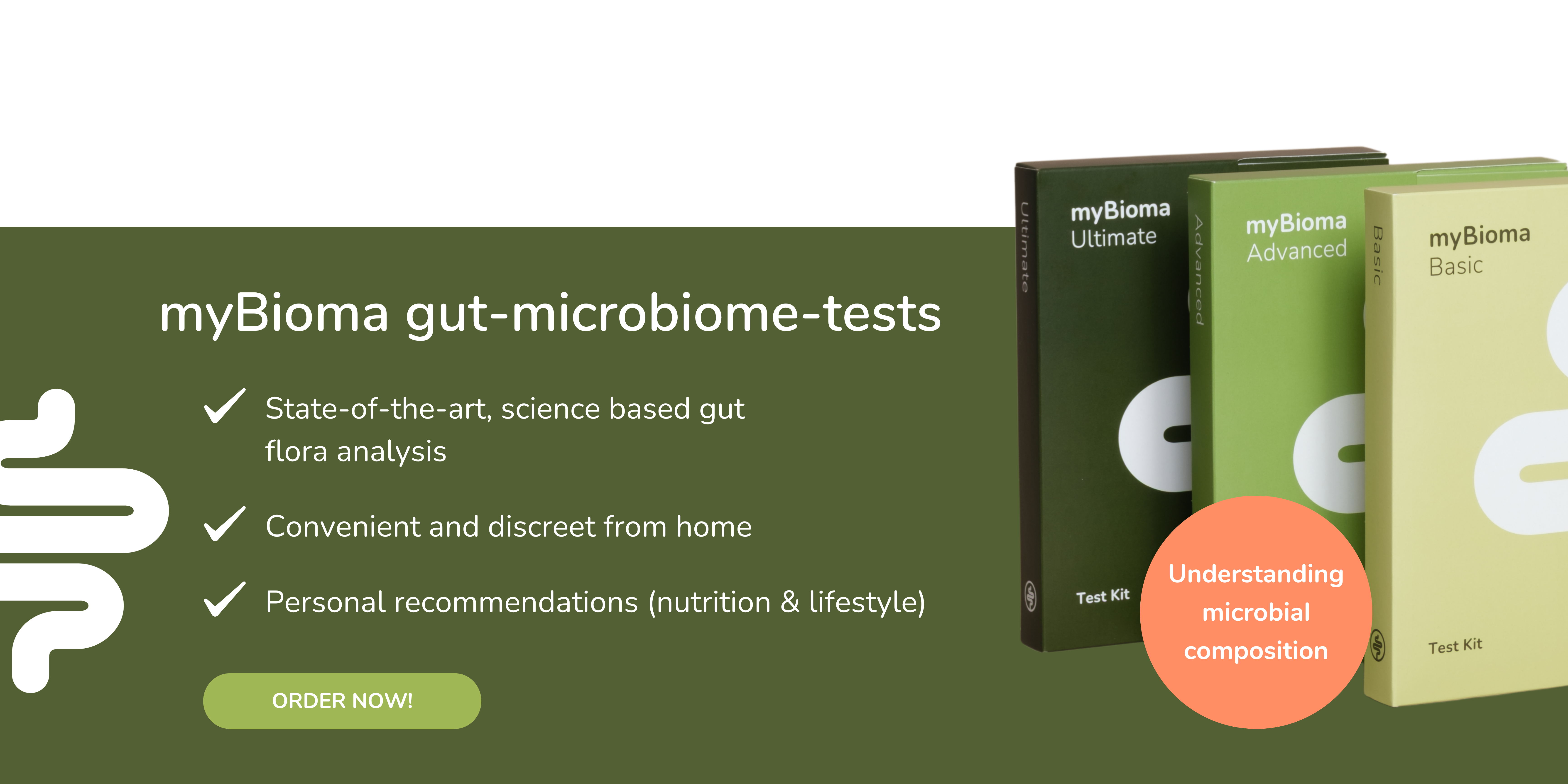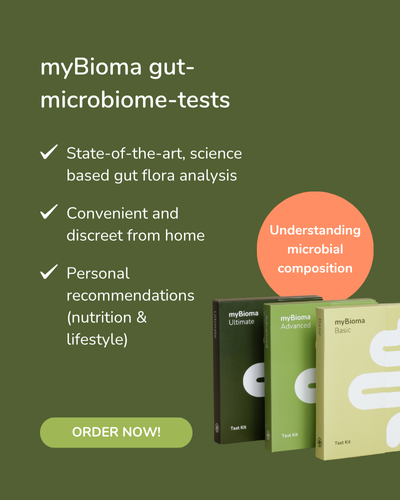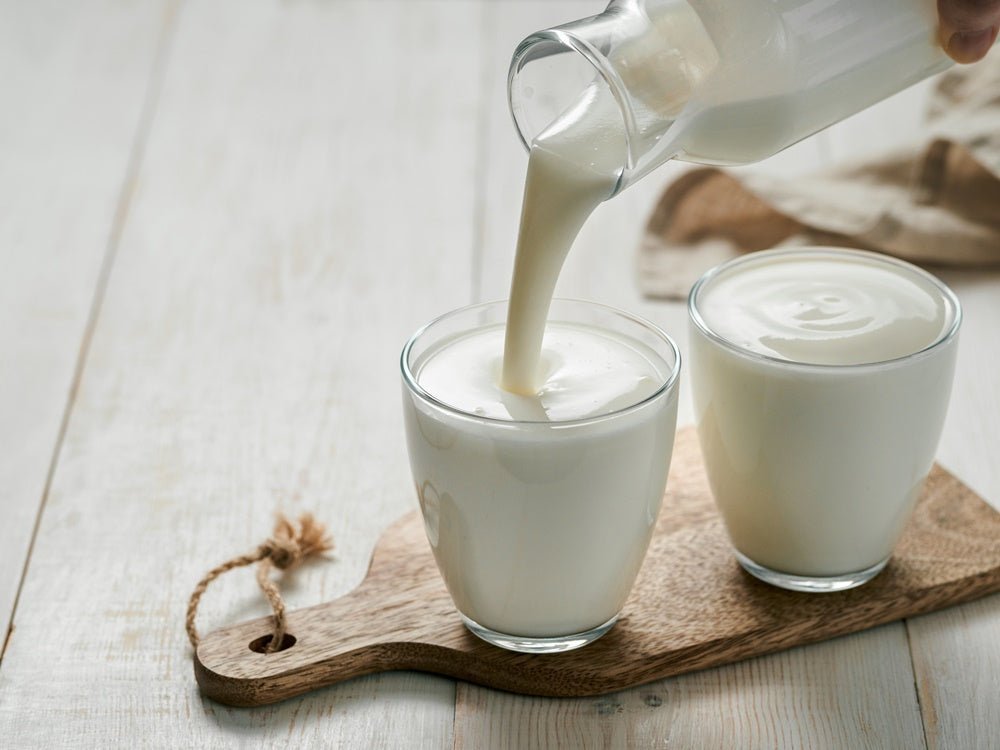Table of contents
- This is why you should ferment red cabbage:
- What exactly is fermentation?
- Why should I ferment red cabbage?
- Fermented red cabbage – a Christmas recipe
- Preparation – this is how you prepare red cabbage
- How long can you keep red cabbage in the fridge?
- What goes well with red cabbage?
- How healthy is red cabbage?
- The benefits of the ingredients for your intestinal health
- Microbiome food – recipes for your intestinal bacteria
This is why you should ferment red cabbage:
Have you ever tried homemade red cabbage or even made it yourself?
Red cabbage is a popular side dish for festive dishes, especially at Christmas time. Today we have a recipe for you on how you can easily ferment your own red cabbage.
Red cabbage not only tastes wonderful, it can also help you relieve your intestines during the Christmas season. Fermented foods can perfectly support your intestines and can prevent your intestines from being confused or even offended by cookies, holiday foods and other treats.
Our red cabbage sets up quickly and then only needs to be fermented for about 2-3 weeks. The recipe combines Christmas spices such as cinnamon and cloves with the sweet and sour taste of cranberries. If that's not delicious!
The red cabbage is easy to prepare, gut-friendly and the absolute highlight of your Christmas dinner!
What exactly is fermentation?
The term refers to the controlled and desired growth of microorganisms in food and drinks. During fermentation, substances are created that have incredibly valuable effects on our microbiome and our health in general.
Why should I ferment red cabbage?
Are you wondering why you should ferment the red cabbage instead of just cooking it? This is quickly explained:
The advantage of fermented red cabbage is that it has raw food quality. Most commercial red cabbage is heated. As a result, vitamins and other health-promoting ingredients are lost.
In addition, cooked red cabbage does not contain any living organisms that can be incredibly valuable for your intestinal health.
Another advantage of homemade red cabbage is that you can use your favorite spices and modify them however you like.
Fermented red cabbage – a Christmas recipe
For the Christmas season we have instructions for red cabbage with suitable spices for this time of year. Red cabbage is perfect for a festive meal during the Christmas holidays.
The guests will be amazed!
The ingredients:
- 1kg red cabbage
- 1 apple
- Juice of one orange or approx. 80-100ml orange juice
- 20g salt (always 2% salt solution)
- ½ tsp cinnamon
- a pinch of cloves
- 30-40g cranberries
In addition: a large preserving jar or fermentation jar (approx. 1-1.5L)

Freshly chopped red cabbage before fermentation.
Preparation – this is how you prepare red cabbage
First wash the cabbage and then cut it into strips as thin as possible. The thicker the slices, the harder they will remain.
Roughly grate the apple and squeeze the orange. Roughly chop the cranberries. All of the above ingredients are mixed in a bowl and must now rest for about 15 minutes. A small brine forms in the bowl.
Then the cabbage is kneaded with your hands so that even more of the brine is created. Here too, the longer and harder you knead, the softer the cabbage will become. You can decide for yourself what you prefer. We prefer the cabbage softer.
Now fill the cabbage in layers into a large, airtight jar. In between, press and compact well with the back of your hand so that as little air as possible is trapped. The brine should rise above the cabbage.
Finally, a cabbage leaf is placed into the jar as a cover and weighed down with a smaller mason jar/stone. The fermentation glass should only be ¾ full, otherwise it could overflow during the fermentation. The jar is closed and stored in a warm and dark place for the first 3 days. Then store in a cool, dark place.
The jar can also be opened every few days so that any gases produced can escape. After about 2-3 weeks, just give the cabbage a try. If it tastes sour and full-bodied, it is ready and can be enjoyed immediately or stored in the refrigerator/cellar.
You can find this recipe and many other wholesome, gut-friendly dishes and desserts in our recipe book: Microbiome food - recipes for your intestinal bacteria .
How long can you keep red cabbage in the fridge?
The fermented cabbage should be sealed as airtight as possible and can then be stored in the refrigerator for several days to weeks.

Vegan savoy cabbage roulades from our recipe book with fermented red cabbage.
What goes well with red cabbage?
Red cabbage tastes wonderful with various meat dishes, vegan and vegetarian delicacies. Red cabbage also tastes wonderful with Schupfnudeln!
How healthy is red cabbage?
When consumed regularly, fermented foods can:
- inhibit unwanted microorganisms in the intestine
- promote a strong immune system
- have a positive influence on our nerves
- Prevent or alleviate anxiety and depression
- Reduce the risk of many social diseases such as cardiovascular diseases and metabolic disorders
Fermentation makes the food easier to digest and the nutrients can be better absorbed in the body. Fermented foods are also suitable for people with a sensitive stomach or irritable bowel syndrome. (1)
The benefits of the ingredients for your intestinal health
Cabbage: Cabbage contains a lot of vitamins K and C and is therefore beneficial for the health of our blood, our bones and for a powerful immune system. It also contains many antioxidants and other sulfur-containing ingredients such as mustard oils , which protect our body and cells from unwanted changes. Cabbage contains a lot of fiber , which is a feast for our good intestinal inhabitants. (2)
Cinnamon: Cinnamon is beneficial for good bacteria and hinders the bad ones. Cinnamon contains many antioxidants that can bind free radicals and at the same time support your metabolism. The flavonoid proanthocyanidin contained in cinnamon can stimulate fat cells to secrete insulin and thus lower your blood sugar levels. Cinnamon can also help support digestion and minimize the risk of irritation to the digestive tract. (3)
Cloves: Cloves can have a pain-relieving effect and can be used to combat unwanted fungi, viruses or bacteria. Cloves can also help lower and stabilize blood sugar levels. Anyone who suffers from loss of appetite or gastrointestinal problems can also use cloves. These can naturally stimulate the appetite and also calm the digestive tract. (4)
Cranberries: Cranberries contain many substances such as flavonols , anthocyanins and procyanidins that can reduce the risk of developing circulatory diseases, atherosclerosis or cancer. By consuming cranberries, the disease-promoting Helicobacter pylori can be inhibited and inflammation in the intestines can be prevented. Cranberries can also relieve and shorten a bladder infection. (5)
If you try the recipe, please share it on your social media account and tag us @mybioma. We are happy!
You can find more delicious and gut-friendly recipes on our blog. Try it: Lentil and vegetable stew: food for your slimming bacteria
Microbiome food – recipes for your intestinal bacteria
Diet forms the basis of a healthy microbiome. If you give your intestinal bacteria the right food, you will contribute to a healthy balance in your microbiome and help you feel better. In the myBioma recipe book you will find a selection of 40 gut-friendly recipes with additional nutritional knowledge. You can find more information here: Microbiome food – recipes for your intestinal bacteria .

Fermented Christmas red cabbage.
References
- Dimidi E, Cox S. R, Rossi M, Whelan K. Fermented Foods: Definitions and Characteristics, Impact on the Gut Microbiota and Effects on Gastrointestinal Health and Disease. Nutrients 11, 1806 (2019). Doi: https://doi.org/10.3390/nu11081806
- Rehberg C. Fermentation von Gemüse zur Herstellung eigener Probiotika. Zentrum der Gesundheit (2021). https://www.zentrum-der-gesundheit.de/ernaehrung/lebensmittel/fermentation-uebersicht/fermentation [04.11.2012]
- Stiemsma L. T, Nakamura R. E, Nguyen J, Michels K.B. Does Consumption of Fermented Foods Modify the Human Gut Microbiota? The Journal of Nurtition 150, 1680-1692 (2020). Doi: https://doi.org/10.1093/jn/nxaa077
- Moreb N., Murphy A., Jaiswal S., Jaiswal A. K. Chapter 3- Cabbage. Nutritional Composition and Antioxidant Properties of Fruit and Vegetables, Academic Press (2020), 33-54. Doi: https://doi.org/10.1016/B978-0-12-812780-3.00003-9
- Rowland I, et al. Gut microbiota functions: metabolism of nutrients and other food components. Eur J Nutr 57: 1 (2018).
- Tianthong W, Phupong V. A randomized, double-blind, placebo-controlled trial on the efficacy of ginger in the prevention of abdominal distention in post cesarean section patients. Sci Rep.
- Viuda-Martos M et al., “Antioxidant activity of essential oils of five spice plants widely used in a Mediterranean diet” Flavour and Fragrance Journal Vol 25, Issue 1, pages 1319, January/February 2010
- Pinto E et al., “Antifungal activity of the clove essential oil from Syzygium aromaticum on Candida, Aspergillus and dermatophyte species.”J Med Microbiol. 2009 Nov;58(Pt 11):1454-62.
- Howell AB, Reed JD, Krueger CG, Winterbottom R, Cunningham DG and Leahy M, A-type cranberry proanthocyanidins and uropathogenic bacterial anti-adhesion activity. Phytochemistry 66:2281-2291 (2005)
- Zhao S., Liu H., Gu L. American cranberries and health benefits – an evolving story of 25 years. J Sci Food Acric. (2020), 100, 5111-5116. Doi: 10.1002/jsfa.8882.









